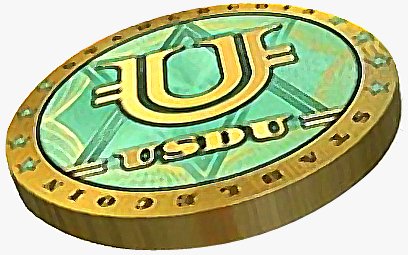Accredited InvestorsAltcoinAnatoli UnitskyAnti-Money Laundering (AML) In CryptoAPIArbitrageArtCoin TokenArticle DirectoryASICAuction Terminology GlossaryBasics of Stock Market InvestingBear MarketBest Crypto Payment Provider In the WorldBitcoinBlockchainBlockchain ConfirmationBlockchain Consensus MechanismBlockchain ForkBlockchain GlossaryBored Ape Yacht ClubBuild a Business That OutperformsBull MarketBuying SkyWay SharesByzantine Fault Tolerance (BFT) ExplainedCasascius CoinCentral Bank Digital Currency (CBDC)Centralized Crypto ExchangeCoinCoinsetCold WalletCollateralCommodity Futures Trading Commission (CFTC)Cross-Chain TechnologyCRUCrypto ExchangeCrypto GlossaryCrypto JokesCrypto Terms to KnowCrypto TickerCryptocurrencyCryptographyCryptojackingCryptounit BlockchainCryptounit GlossaryCryptounit ProgramdApp (Decentralized Application)Dead CoinDecentralized Exchange (DEX)Decentralized Finance (DeFi)Difference Between Bitcoin and EthereumDifferent Ways of Investing MoneyDigital CurrencyDistributed LedgerDo Your Own Research (DYOR)Dollar Cost Averaging (DCA)Dow Jones Industrial Average (DJIA)EncryptionERC-20ERC-721EthereumEvoScentFear Of Missing Out (FOMO)Fear, Uncertainty and Doubt (FUD)Fiat MoneyFNT Fintech CompanyGenesis BlockGlobal Unit PayGlossary of Banking TermsGlossary of Business TermsGlossary of Financial TermsHalvingHODLHot WalletHow Do I Start InvestingHow Rich is Satoshi Nakamoto?How to Create a BlockchainHow to Find Private InvestorsHow to Get Into FintechHow to Program Smart ContractsI Am Thrilled to Be a Part of This Global ProjectInitial Coin Offering (ICO)Initial Public Offering (IPO)Initial Token Offering (ITO)Innovation Basalt TechnologyInnovative Transportation TechnologiesInternational Bank Account Number (IBAN)Investing in Gold Mining StocksInvesting in Gold MiningJagerJoy of Missing Out (JOMO)Know Your Customer (KYC)LedgerLiquidity in CryptocurrencyMaker and Taker Fees in Crypto TradingMarket Capitalization (Market Cap)Meme CoinMetal Credit CardMetaMaskMillenials Now Have Access to Generational WealthMy Best Investment EverNew Digital EvolutionNFT GlossaryOff-Chain TransactionsOn-Chain TransactionsOpen Edition NFTPeer-to-Peer (P2P)Personal Loan GlossaryProbably the Best STO on the MarketProof of Stake (PoS)Real Estate Glossary of TermsReal Estate Investing GlossaryRebase TokenSecurities and Exchange Commission (SEC)Security Token ExchangesSecurity Token Offering (STO)Soulbound Decentralized Identities for Security TokensSoulbound ID Launch by Stobox Proves a SuccessSoulbound TokensStoboxStock Market GlossaryTestimonialsTether Platform and Token (USDT)UnitEx ExchangeUnitsky String TechnologiesUNTBUSDUValidatorWe Started Investing When We Were 25What are Blue Chip NFT?What are Blue Chip Stocks?What are Crypto Assets?What are Crypto Smart Contracts?What are CryptoPunks NFT?What are Digital Assets?What are Digital Collectibles?What are Gas Fees?What are Gas Wars?What are Hashmasks?What are Non Fungible Tokens?What are Non-Sufficient Funds (NSF)?What are Soulbound Tokens (SBT)?What are Stablecoins in Crypto?What are Transactions Per Second (TPS)?What are Utility NFTs?What are Utility Tokens?What Does Burning Crypto Mean?What Does Diamond Hands Mean?What Does Paper Hands Mean?What Does To The Moon Mean?What Does WAGMI Mean?What Happened to Satoshi Nakamoto?What is a 51% Attack?What is a Baby Boomer?What is a Backlink?What is a Banner?What is a Barcode?What is a Bid-Ask Spread in Crypto?What is a Block in Blockchain?What is a Block Reward?What is a Blockchain Address?What is a Blockchain Node?What is a Blockchain Oracle?What is a Blog?What is a Bond?What is a Bot?What is a Broker?What is a Business Accelerator?What is a Cash Cow?What is a Commercial Bank?What is a Commodity?What is a Con?What is a Credit?What is a Credit Limit?What is a Credit Rating?What is a Crypto Airdrop?What is a Crypto Bridge?What is a Crypto Scam?What is a Crypto Token?What is a Crypto Wallet?What is a Crypto Whale?What is a Crypto Winter?What is a Cryptocurrency Public Ledger?What is a Cryptocurrency Roadmap?What is a DAO?What is a Dark Pool?What is a Day Trader?What is a Dead Cat Bounce?What is a Default?What is a Derivative?What is a Digital Credit Card?What is a Fiscal Quarter?What is a Fungible Token?What is a Governance Token?What is a Grace Period?What is a Hard Fork?What is a Hot Wallet?What is a Hybrid Blockchain?What is a Hybrid PoW/PoS?What is a Joint Account?What is a Market Cap?What is a Merkle Tree in Blockchain?What is a Mining Farm?What is a Nonce? What is a PFP NFT?What is a POS System?What is a Prepaid Card?What is a Private Blockchain?What is a Private Key?What is a Public Blockchain?What is a Public Key?What is a Reserve Currency?What is a Ring Signature?What is a Routing Number?What is a Rug Pull in Crypto?What is a Safe Deposit Box?What is a Satoshi?What is a Security Token?What is a Seed Phrase?What is a Shitcoin?What is a Sidechain?What is a Soft Fork?What is a Spot Market?What is a State Bank?What is a SWIFT Code?What is a Tax Identification Number (TIN)?What is a Time Deposit?What is a Transaction Account?What is a Variable Interest Rate?What is a Virtual Assistant (VA)?What is a Virtual Card?What is a Virtual Currency?What is a Visa Card?What is a Whitelist in Crypto?What is a Whitepaper?What is Accounts Payable (AP)?What is AMA in Crypto?What is Amortization?What is an Accrual?What is an ACH Transfer?What is an Actuary?What is an Addendum?What is an Algorithm?What is an Angel Investor?What is an Annuity?What is an Asset?What is an ATM?What is an Atomic Swap?What is an Audit?What is an Avatar?What is an EIN?What is an Embargo?What is an Entrepreneur?What is an IDO (Initial Dex Offering)?What is an Interest Rate?What is an Internet cookie?What is an Investment Bank?What is an NFT Drop?What is an NFT Floor Price?What is an Ommer Block?What is an Orphan Block?What is an Outstanding Check?What is an Overdraft?What is Artificial Intelligence (AI)?What is B2B (Business-to-Business)?What is B2G (Business-to-Government)?What is Bartering?What is Bitcoin Dominance?What is Bitcoin Pizza Day?What is Blockchain Immutability?What is Blockchain Used For?What is BRICS?What is Business-to-Consumer (B2C)?What is C2C (Customer to Customer)?What is Capitalism?What is Catfishing?What is CFD Trading?What is Check Kiting?What is Cloud Mining?What is Communism?What is Content Marketing?What is Decentralization in Blockchain?What is DeFi in Crypto?What is Delisting?What is Depreciation?What is Digital Marketing?What is Diversification?What is Double Spending?What is Dumb Money?What is Dumping?What is Earnings Per Share (EPS)?What is Economics?What is Email Marketing?What is Equity?What is Etherscan?What is Fintech?What is Foreign currency?What is Forex?What is Fundamental Analysis (FA)?What is GameFi?What is Generative Art NFT?What is Gwei?What is Hard Currency?What is Hash Rate?What is Hashing in Blockchain?What is Inflation?What is Initial Game Offering (IGO)?What is Interest?What is Interest Income?What is Mainnet?What is Mastercard?What is Metaverse in Crypto?What is Mining in Cryptocurrency?What is Minting NFT?What is Mobile Banking?What is Money Laundering?What is NFT Alpha?What is NFT Metadata?What is NFT Rarity?What is NGMI Meaning?What is Nominal Interest Rate?What is Online Banking?What is Open-End Credit?What is OpenSea NFT Marketplace?What is Personal Identification Number (PIN)?What is Play-to-Earn?What is Polygon?What is Proof of Authority (PoA)?What is Proof of Work (PoW)?What is Public Key Cryptography?What is Pump and Dump?What is Quantum Computing?What is Refinancing?What is Retail Banking?What is Ripple?What is Sharding?What is Slippage in Crypto?What is Smart Money?What is Solvency?What is Soulbound ID?What is SSL?What is Staking in Cryptocurrency?What is Technical Analysis (TA)?What is Testnet?What is the Ask Price?What is the Better Business Bureau (BBB)?What is the Bid Price?What is the Dark Web?What is the InterPlanetary File System (IPFS)?What is the Gold Standard?What is the Lightning Network?What is the Prime Rate?What is the Sandbox?What is the Secondary Market?What is the World Bank?What is Tier 1 Capital?What is Tokenomics?What is TRC-20?What is Universal Banking?What is Unspent Transaction Output (UTXO)?What is Usury?What is Volatility in Crypto?What is Wash Trading?What is Web3?What is Whisper?What is XRP?What is Zero-Knowledge Proof (ZKP)?Who is Beeple?Who is Satoshi Nakamoto?Who is Vitalik Buterin?Why Tokenization is a Safe HavenWhy You Should Try Your Hand at Trading
What are Stablecoins in Crypto?
- Home
- Cryptounit Glossary
- What are Stablecoins in Crypto?
When it comes to cryptocurrencies, one cannot overlook their volatility. However, there is one type of cryptocurrency that is particularly designed to provide a stable price: stablecoins.
Stablecoins have become essential components in the crypto world, offering important functions for investors and speculators.
What are Stablecoins in Crypto?
Stablecoins are digital currencies that are pegged to a "stable" reserve asset, such as the US dollar or gold. Stablecoins are intended to lessen volatility in comparison to unpegged cryptocurrencies.
The entire cryptocurrency market capitalization can fluctuate by billions of dollars a day. Fiat currencies, such as the US dollar or the British pound, do not experience this amount of price fluctuation. Another way to think of stablecoins is as a tokenized version of fiat money. In theory, a US dollar-based stablecoin is a token that will stay on a blockchain and always trade for a dollar.
Some events have highlighted that stablecoins can differ in their ability to maintain price stability. For example, the TerraUSD crash showed that even stablecoins may not always guarantee stable prices.
Types of Stablecoins
Stablecoins are classified into three types based on the mechanism used to keep their value stable.
- Fiat-Collateralized Stablecoins - The primary and most common way is to back up each stablecoin in circulation with an equivalent value in fiat currency or cash equivalents. This is referred to as a fiat-backed stablecoin. This means that for every stablecoin, the equivalent of one USD is held on reserve in the issuer's U.S. bank accounts. These reserves are regularly audited by independent accounting firms on a monthly basis, and details of their holdings are displayed openly for public observation.
- Crypto-Collateralized Stablecoins - Stablecoins that are backed by other cryptocurrencies. Since reserve cryptocurrency can also be highly volatile, such stablecoins are overcollateralized, meaning that the value of cryptocurrency held in reserves exceeds the value of issued stablecoins.
- Algorithmic Stablecoins - Algorithmic stablecoins may or may not contain reserve assets. Their biggest distinction is the technique of maintaining the stablecoin's value by regulating its supply via an algorithm, which is effectively a computer software performing a preset formula. In some respects, this is similar to central banks, which don't rely on a reserve asset to maintain the value of the currency they issue. The difference is that a central bank, such as the US Federal Reserve, openly sets monetary policy based on well-defined parameters, and its role as a legal tender issuer adds to the legitimacy of that policy.
What Can Stablecoins Be Used For?
- Trade or Save Assets - Stablecoins do not require a bank account and can be transferred easily. Their value can be easily transferred around the world, even in regions where the US dollar is hard to obtain or where the local currency is unstable.
- Minimize Volatility - The value of cryptocurrencies fluctuates significantly, sometimes even within minutes. An asset that is pegged to a more stable currency can provide buyers and sellers with confidence that the value of their tokens will neither rise nor fall unexpectedly in the foreseeable future.
- Transferring Money at a Low Cost - Some people have sent up to a million dollars in USDC with transfer fees of less than $1.
- Send Internationally - Stablecoins are a great alternative for sending money anywhere in the world because of their fast processing and minimal transaction fees.
- Make Money by Earning Interest - There are simple ways to generate interest on a stablecoin investment which is usually higher than the interest rates offered by banks.
Most Popular Stablecoins
The best known stablecoins are those used for trading on cryptocurrency exchanges. Tether (USDT) is the most popular stablecoin, with one of the top five highest market caps for cryptocurrencies.
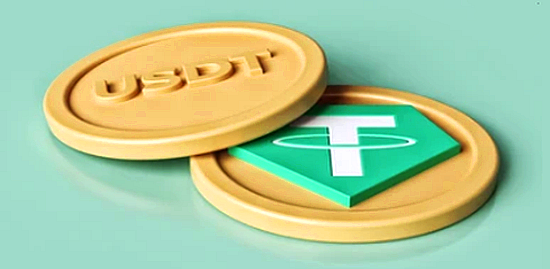
Another is USD coin, or USDC, an open source project managed by a consortium called Centre, and binance USD, a stablecoin created by Binance, the world's largest cryptocurrency exchange.
On the other hand, DAI is a cryptocurrency built on the Ethereum blockchain and is governed and operated by MakerDAO, a decentralized autonomous organization (DAO). As one of the first examples of decentralized finance (DeFi) to gain widespread acceptance, DAI has established itself as a popular and viable option for those seeking a stable cryptocurrency.
Regulation
Stablecoins are currently under heightened scrutiny from regulators due to their rapid growth and the potential for them to impact the wider financial system. In October 2021, the International Organization of Securities Commissions (IOSCO) recommended that stablecoins, like payment networks and clearinghouses, be regulated as financial market infrastructure. The proposed regulatory measures would mainly focus on stablecoins that are deemed to be of systemic importance by regulatory authorities.
What are the Risks
Compared to cryptocurrencies that lack any underlying asset or backing, stablecoins are generally considered to be lower-risk coins. However, like other types of cryptocurrencies, stablecoins are not without risk. The reserves that back a stablecoin are a crucial component of the stablecoin ecosystem, serving as the last line of defense for the coin's value. Without adequate reserves, the issuer cannot guarantee the value of the stablecoin.
While the use of stablecoins may appear to be fully decentralized, the transactions actually involve multiple parties, including the bank that holds the reserves and the company that creates the stablecoin. In order to maintain the coin's value, these parties must take the right actions in terms of security, reserve adequacy, and other factors.
The main risk associated with stablecoins is the possibility that they are not fully backed by the reserve currencies they purport to be backed by. This can occur if the reserve is not adequately secured or if the reserve currency itself experiences significant fluctuations in value."
Related Articles
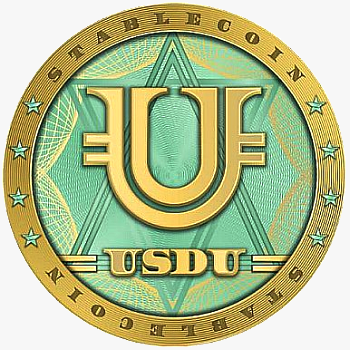
USDU
Each USDU coin is backed by the US dollar, positioned in custodian bank or by USDC coin (a cryptocurrency with a stable price), positioned in custodian escrow firm.
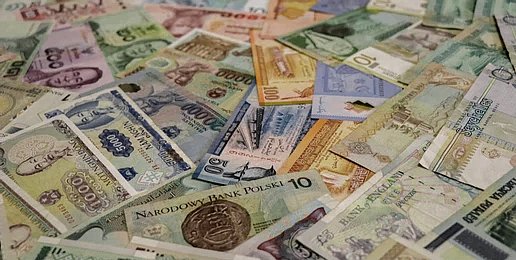
Fiat
Fiat money is a government-issued currency that is not backed by a tangible commodity like gold or silver, but rather by the government that...
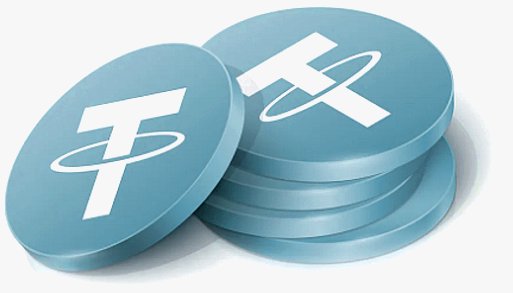
Tether Platform and Token (USDT)
Tether allows customers to make transactions with traditional currencies on the blockchain, eliminating the volatility and complexity often associated with...
- Home
- Cryptounit Glossary
- What are Stablecoins in Crypto?
